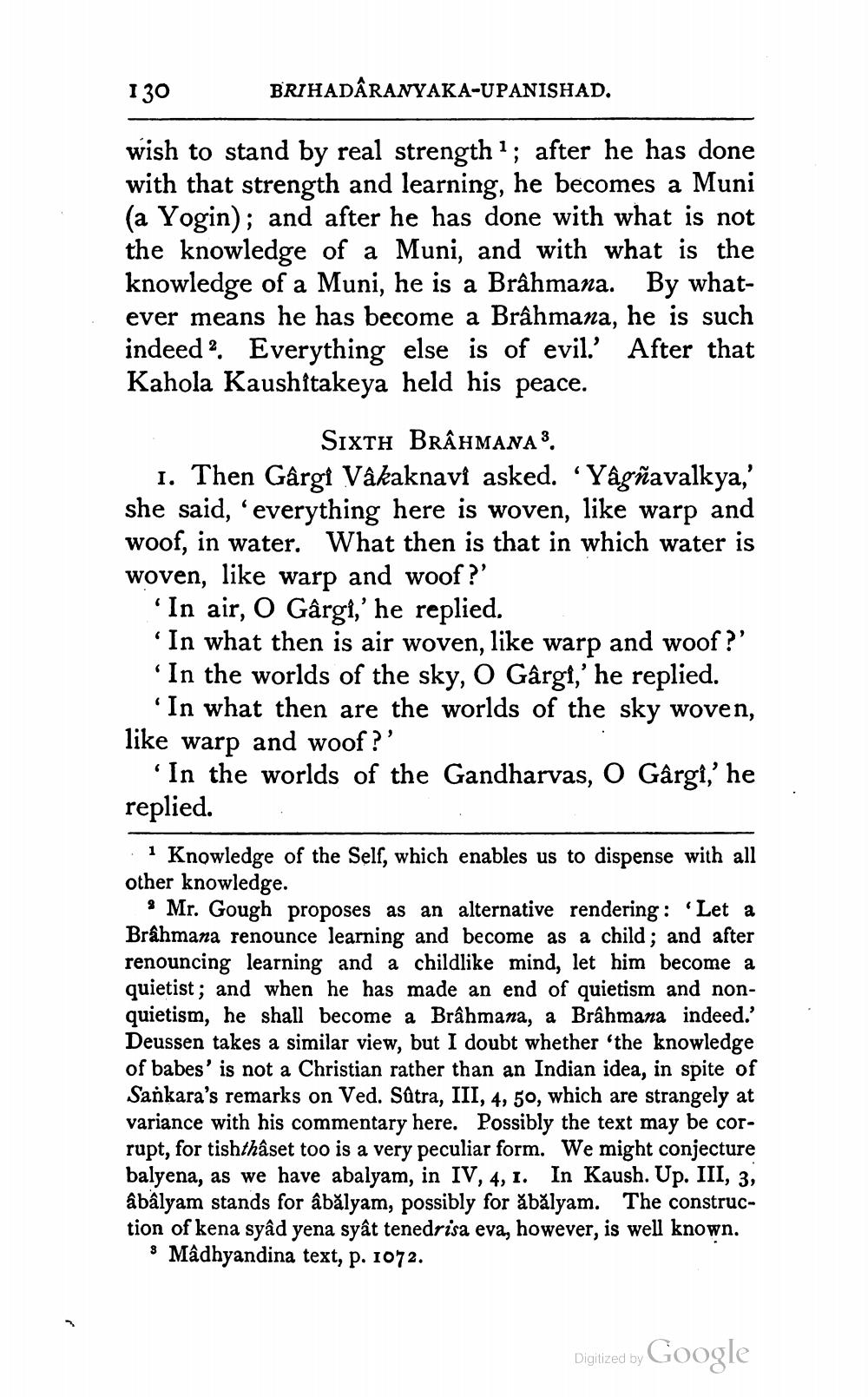________________
130
BRIHADARANYAKA-UPANISHAD.
wish to stand by real strength ?; after he has done with that strength and learning, he becomes a Muni (a Yogin); and after he has done with what is not the knowledge of a Muni, and with what is the knowledge of a Muni, he is a Brâhmana. By whatever means he has become a Brâhmana, he is such indeed 2. Everything else is of evil.' After that Kahola Kaushitakeya held his peace.
Sixth BRÂHMANA 3. 1. Then Gârgi Vakaknavi asked. “Yâgñavalkya,' she said, 'everything here is woven, like warp and woof, in water. What then is that in which water is woven, like warp and woof?'
In air, O Gârgi,' he replied. "In what then is air woven, like warp and woof?' 'In the worlds of the sky, O Gârgt,' he replied.
'In what then are the worlds of the sky woven, like warp and woof?'
'In the worlds of the Gandharvas, O Gârgi,' he
replied.
• 1 Knowledge of the Self, which enables us to dispense with all other knowledge.
* Mr. Gough proposes as an alternative rendering: 'Let a Brahmana renounce learning and become as a child; and after renouncing learning and a childlike mind, let him become a quietist; and when he has made an end of quietism and nonquietism, he shall become a Brâhmana, a Brâhmana indeed.' Deussen takes a similar view, but I doubt whether the knowledge of babes' is not a Christian rather than an Indian idea, in spite of Sankara's remarks on Ved. Sætra, III, 4, 50, which are strangely at variance with his commentary here. Possibly the text may be corrupt, for tishthâset too is a very peculiar form. We might conjecture balyena, as we have abalyam, in IV, 4, 1. In Kaush. Up. III, 3, âbâlyam stands for âbălyam, possibly for åbălyam. The construction of kena syâd yena syât tenedrisa eva, however, is well known.
8 Mâdhyandina text, p. 1072.
Digitized by Google




